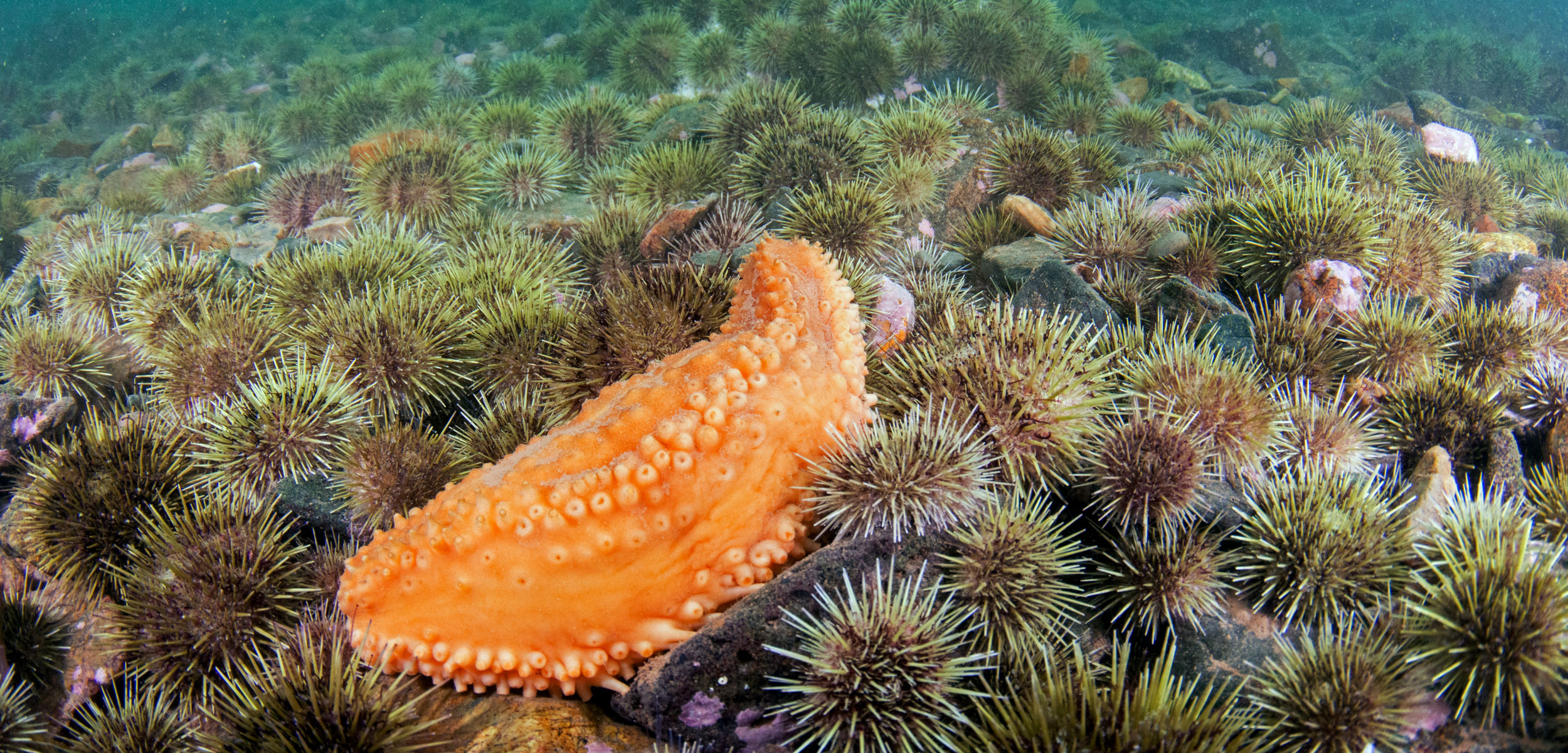Sea Cucumbers Keep Rollin’ Rollin’ Rollin’
Scientists have discovered the surprising way orange-footed sea cucumbers get around.
Article body copy
It’s an odd line to hear, that the sea cucumbers “wouldn’t settle down.” But that curious observation, made in the lab of Memorial University of Newfoundland professor and biologist Annie Mercier, set the stage for the discovery of a wholly unexpected mode of locomotion in orange-footed sea cucumbers.
These creatures, which look something like 20-centimeter-long footballs with a cluster of branch-like tentacles at one end, were long thought to live sedentary lives. However, Mercier’s new laboratory research shows that, when under duress, the orange-footed sea cucumber will release its grip from the ocean floor, pump itself full of water, and roll away. To make its great escape, the invertebrate absorbs water through both its mouth and anus.
“The body becomes round and neutrally buoyant, which is how it can get carried out by the currents,” Mercier says.
Dubbed active buoyancy adjustment (ABA), the reaction triggers when the sea cucumber is overcrowded or the quality of the water decreases. They will also inflate and float away when a predator appears—though in this case they can also wriggle away using their rows of tiny tube feet.
Sea cucumbers absorb water to become buoyant and get carried off by the currents. Video by Hamel et al.
Under normal conditions, sea cucumbers are about 30 percent water. In dire circumstances, when ABA occurs quickly, the sea cucumber becomes about 70 percent water.
Mercier suspects that with this floatation technique orange-footed sea cucumbers could travel relatively large distances throughout their lifetimes, perhaps as much as a few kilometers a day.
Mercier hopes to test if other sea cucumber species also adjust their buoyancy in this fashion. The researcher says she’s seen footage on social media of other species, including one in Madagascar, rolling around in the ocean.
Though he is aware of Mercier’s research, biologist Andy Suhrbier says he has not seen the giant red sea cucumbers his group studies exhibit the same active buoyancy behavior.
Suhrbier works with the Pacific Shellfish Institute, a US-based organization that is developing aquaculture methods to raise the giant red sea cucumber as food. Sea cucumbers, including the orange-footed type, are growing in popularity as a luxury food. Increasingly, coastal countries are eying aquaculture to meet the growing demand, the bulk of which comes from China.
Mercier says her research puts into doubt the estimated biomass of wild sea cucumbers, considering those estimates were made with a notoriously sedentary creature in mind. Stocks of the creature could be overestimated if a mobile group was mistakenly counted twice—but the inverse could also be true, she says.
“What we know now is that stocks are not necessarily stable in a given area,” she says, adding better methods of estimating populations should be developed.
While the orange-footed sea cucumber is not endangered, other sea cucumber species are on the International Union for Conservation of Nature’s list of critically endangered species. According to Mercier, considering it’s likely other sea cucumber species also use ABA to move around, the current conservation statuses of these different species could also be unreliable.

